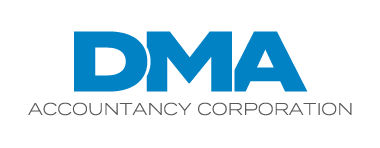For a long time now, cafeteria plans — also known as flexible benefits plans or Section 125 plans — have allowed employers to offer employees a varied menu of customized, tax-friendly fringe benefits.
One of the great things about these plans is that, once designed and implemented, they’re relatively easy to administer. However, cafeteria plans still need regular “care and feeding” to avoid potentially costly mistakes.
Plan design and offerings
If your organization sponsors a cafeteria plan, you’re no doubt aware of how it works. But that doesn’t mean you shouldn’t regularly review your plan’s design and menu of benefits. You want to ensure the plan is still a good fit overall, and that it isn’t missing any benefits that your current staff would value.
Let’s review the basics. Cafeteria plans give participants a choice between receiving taxable cash compensation and selecting from a menu of tax-free benefits, such as:
- Group term life insurance,
- Qualified retirement plans,
- Accident and health care insurance,
- Dependent care assistance, and
- Adoption assistance.
Benefits are funded by salary reductions. These enable participants to buy benefits with pretax dollars, reducing their taxable incomes, while you, the employer-sponsor, avoid payroll taxes on those purchases.
Cafeteria plans may be designed in various ways. For example, premium-only plans allocate a portion of employees’ pretax earnings to pay for accident and health care insurance. Alternatively, cafeteria plans can offer tax-friendly health care accounts, such as Flexible Spending Accounts and Health Savings Accounts. Under these options, participants set aside pretax dollars to pay for qualifying medical expenses or dependent care expenses.
The big four
From a compliance perspective, the most important thing to bear in mind regarding cafeteria plans is that they’re subject to strict legal requirements under the Employee Retirement Income Security Act (ERISA). Four of the most common mistakes that sponsors may make with ERISA plans are:
- Failing to create or update a written plan document or summary plan description (SPD). Sponsors must have a plan document in place that contains relevant information about the plan and is timely modified to reflect any changes or updates. In addition, plan sponsors need to generate an SPD and distribute it to new and existing participants under certain rules.
- Providing benefits to ineligible employees. Participants in cafeteria plans must be current or former employees. Partners in partnerships and more-than-2% shareholders in S corporations are considered to be self-employed. Therefore, they’re ineligible. Allowing them to participate can disqualify the plan.
- Failing to conduct discrimination testing. ERISA plans must meet nondiscrimination requirements. That means the plan can’t discriminate in favor of highly compensated or key employees with respect to eligibility, contributions or benefits. Plan sponsors need to test for discrimination at least annually — and even more frequently if changed circumstances create compliance risks.
Simplified discrimination testing is available for small businesses (those with fewer than 100 employees) that set up “simple cafeteria plans.” These plans provide a minimum level of benefits to all eligible participants who aren’t highly compensated or key employees.
- Not keeping up with other administrative requirements. ERISA plans must comply with various recordkeeping, notice and reporting requirements. Some may need to establish a trust fund to hold plan assets. It’s critical to keep up with these requirements, as well as with any federal guidance issued.
The risks of benefits
Uncorrected plan errors can cause participants to lose the tax advantages associated with their benefits. Work closely with your benefits advisors to avoid such trouble. For help identifying the costs associated with your cafeteria plan, contact us. We can also further explain the tax implications.
© 2024


Recent Comments